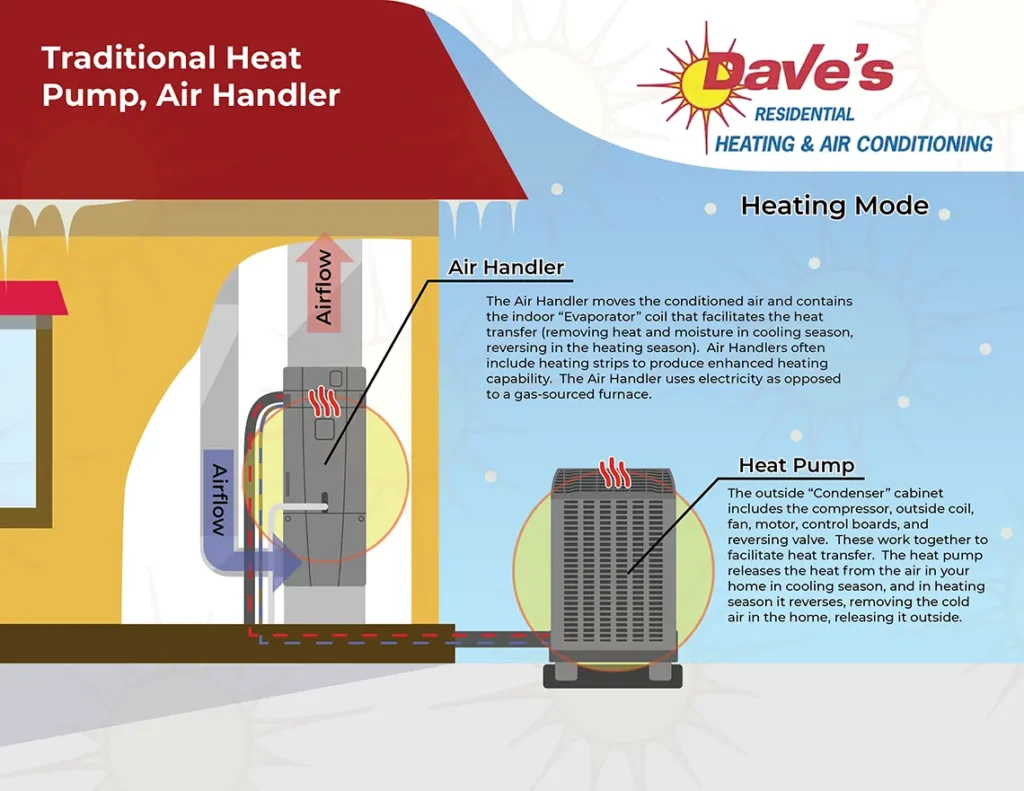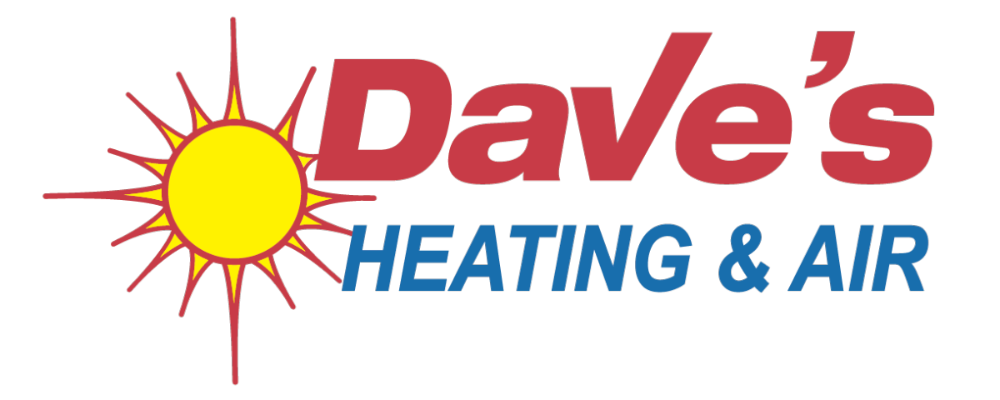
Request Service - It Only Takes 7 Seconds!
Traditional Heat Pump, Air Handler
This is a common, effective, and dependable central air system whereby two distinct pieces of equipment come together to serve your cooling and heating needs, as summarized below:
-
Heat Pump (heating and cooling) Yes, the industry nomenclature is confusing- the heat pump provides both heating and cooling. It is not that different from the 3-piece Air Conditioner with Furnace set-up, but it does differ. Instead of a furnace, it has an air handler (located inside the house) which itself has the indoor coil for cooling within it. It just does not burn gas, or oil, or propane like a furnace does. It creates heat by removing cold air from your home and it can be supplemented with electric heating strips.
The air handler is located inside the house and the heat pump (which looks just like an air conditioner compressor) is located outside the house. Because this system does not rely directly on fuel combustion like a furnace it is considered greener than the air conditioner with furnace system.
- In a nutshell: The heat pump (outside unit) removes heat from the air and the indoor coil (inside the home, located within the air handler) cools the air that is distributed throughout your home via ductwork. In winter, it reverses, removing the cold air in the home and circulating warm air inside the home.
- Main components of the heat pump are:
- Compressor and condenser coil (part of the outside unit)
- Motor and fan (part of outside unit)
- Control board (the “brains” of the compressor, also outside)
- Reversing valves (because a heat pump provides heating and cooling, the reversing valves shift refrigerant flow pursuant to the season)
- Evaporator coil (“indoor coil”, therefore inside the home and part of the air handler)
- Blower & blower motor (technically part of the air handler)
-
Air Handler Your air handler moves the cool or warm air out into the various parts of your home via ductwork. The air handler is located inside your home and is connected to the heat pump via refrigerant lines.
- In a nutshell: The Air Handler moves the conditioned air (either cooled or warmed) and also contains the indoor coil (produces cool air) and can also include heating strips to produce enhanced heating capability.
- Main components of the air handler:
- Intake fan and heat strips, if applicable (draws air in and converts electricity from heating strips into warm air)
- Blower & blower motor (pushes the cool or warm air out into the home via ductwork.)
- Controls (the computer or “brains” of the system which talks to the thermostat and puts everything in motion)
- Evaporator coil (“indoor coil”, therefore inside the home – cools the air in cooling mode)Media filter (this filters the air as it comes into the system before it gets distributed throughout the house. Check out our Indoor Air Quality solutions for additional options)
PROS
- The heat pump system is very versatile and works well in the Mid-Atlantic region. It can be augmented with heat strips to manage colder climates, as desired.
- Does not require a fuel source for combustion into heat, like a furnace, and is considered a greener, electric only solution.
CONS
- None really, except for climates with prolonged freezing, heating strips will be required. This has also led to hybrid/dual fuel systems that incorporate a furnace to provide warmth-certainty in times of prolonged freezing temperatures.
